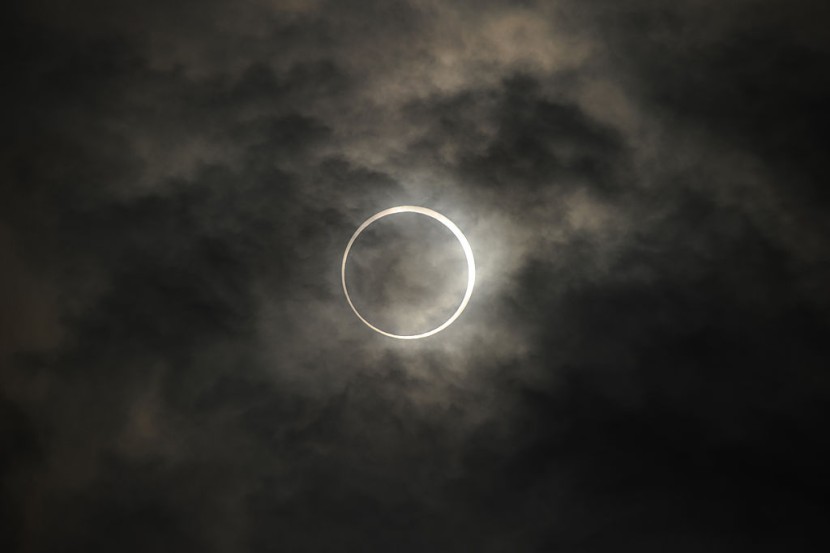
On Thursday, the Northern Hemisphere will be thrilled by a solar eclipse, which will be visible throughout most of the globe. During the annular eclipse, the Moon will pass over the face of our star, but it will not entirely block off the light.
Instead, only a sliver of brilliance will remain to glow around the Sun's disc. The Arctic will have the most exciting action. A partial eclipse, in which the Moon appears to take a giant bite out of the Sun, will still be visible throughout much of the globe.
Which part of the world will witness the Ring of Fire solar eclipse?
The eastern United States and northern Alaska, as well as most of Canada, Greenland, and parts of Europe and Asia, will witness the solar eclipse. Around 40% of the Sun will be covered in these areas, BBC News reported.
The advice is always to avoid looking at the Sun with your naked eye. This has the potential to cause serious harm. Protective viewing equipment, such as approved eclipse glasses or a pinhole projector, should be used by everyone looking up at the sky.
Attending a well-organized event is much better. Local astronomy groups will be out in force, demonstrating how to properly observe the eclipse. The so-called "path of annularity" - the track over the Earth's surface when the Moon sits totally within the Sun's disc, providing the best view - starts at sunrise in Ontario, Canada, at 09:49 GMT (10:49 BST). It then sweeps across the top of the globe, passing over the North Pole on its way to Russia's the Far East, where it will lift off at 11:33 GMT (12:33 BST).
Many Americans in the United States will be able to watch another celestial phenomenon when the "ring of fire" annular solar eclipse occurs. Total eclipses occur when the moon completely blocks the sun; partial eclipses occur when the sun appears to have a small dark shadow on its surface, and annular eclipses occur when the moon completely blocks the sun but the sun's outer rim is still visible.
An annular solar eclipse is called the "ring of fire." According to NASA, this occurs when the moon is too far away from Earth to entirely block out the sun's view, leaving a flaming ring around the moon. The word "Annular" is derived from the Latin word "ring."
Read Also: WATCH: Colorado Tornado Spotted From Airplane Windows; Rips Buildings, Kills Animals
Where, when to watch the 'ring of fire' solar eclipse?
Only a few people living in rural areas will be able to experience the "ring of fire" solar eclipse. Per Time and Date, a website that provides time, weather, and astronomy information, the eclipse will be partially visible throughout the upper Midwest and East Coast of the United States, except Florida. The site added that Americans will be able to watch the eclipse at dawn on Thursday, June 10.
How to safely watch the solar eclipse?
When viewing the eclipse, the American Astronomical Society advises that individuals use eye protection such as eclipse glasses. It is never safe to gaze straight into the sun's rays without suitable protective equipment.
If you can't view the eclipse because of geography, cloudy circumstances, or quarantine restrictions, you can watch it online. A webcast will be broadcast by the Virtual Telescope Project, which is situated in Rome, with worldwide involvement from observers in Canada. The Virtual Telescope Project's website will host the event beginning at 4 a.m. EDT.
On NASA TV, a live webcast of views of the partial solar eclipse will be shown. The live feed will begin at 5 a.m. EDT but will look dark until dawn at 5:47 a.m. EDT. The most recent complete solar eclipse visible in the United States occurred in August 2017. An estimated 20 million individuals witnessed the eclipse of the sun by the moon. The next solar eclipse will occur on December 4.
Related Article: Look: World Dazzles With Stunning Blood Supermoon Through Photos, Videos Posted Online
© 2025 HNGN, All rights reserved. Do not reproduce without permission.








